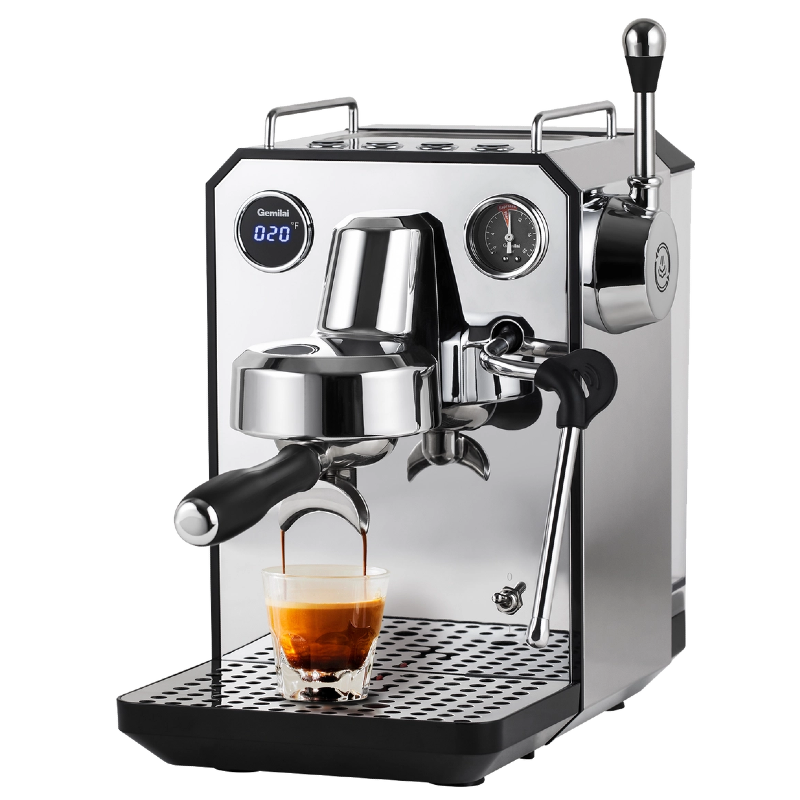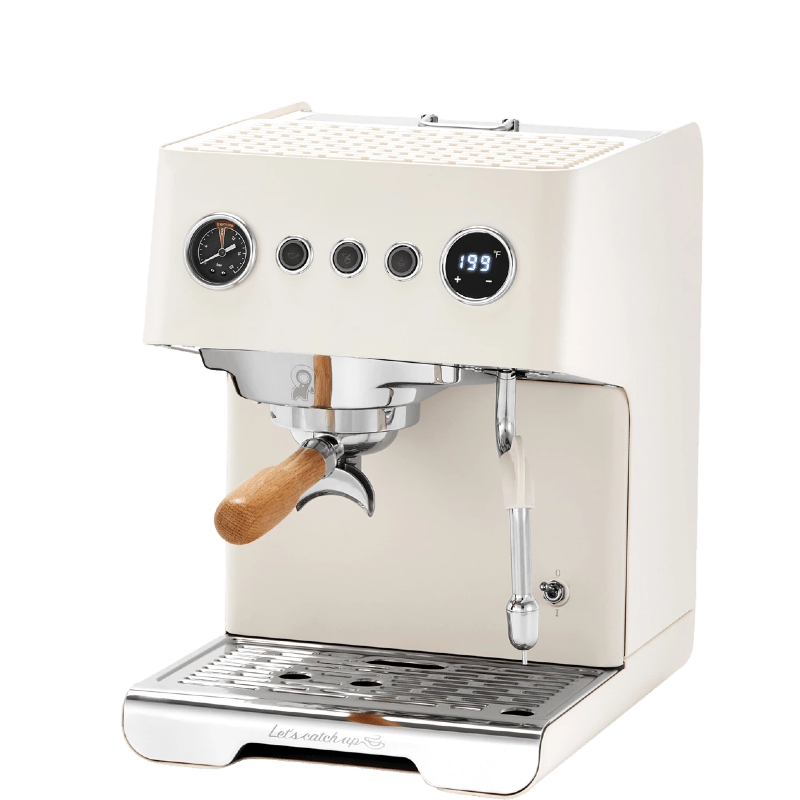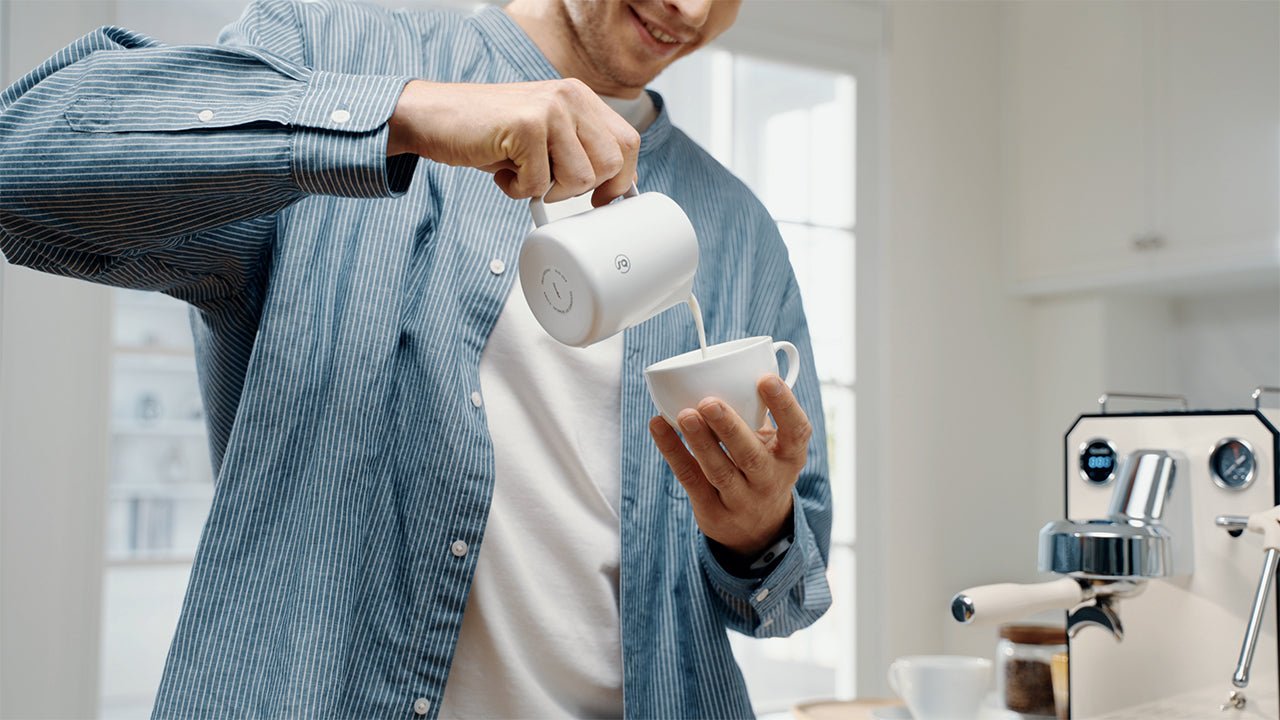Shop
Article: How to Clean an Espresso Machine & Espresso Machine Maintenance Guide
How to Clean an Espresso Machine & Espresso Machine Maintenance Guide
In this article, we are going to talk about different ways to clean an espresso machine and what things you can do to maintain the machine. This comprehensive guide will help you to improve the lifespan of your machine and get a better taste with the past of the time. Maintaining your espresso machine is not just about keeping it looking good. The main reason is that it is about ensuring every cup of coffee tastes as rich, fresh, and flavorful as it should.
We have to talk also about regular cleaning that is essential to preserve the quality of your brews, extend the life of your machine, and avoid costly repairs in the future. Also, we have to take account of the neglecting maintenance that can lead to clogged group heads, buildup of milk residue, bitter tasting coffee, and even internal damage to the machine.

Introduction
Whether you use your machine once a day for multiple uses, we recommend creating consistent habits to protect your investment and keep your coffee experience enjoyable.
A properly maintained espresso machine does not just function better, it also performs more consistently. Oils from coffee grounds, minerals from water and milk residue can all accumulate quickly, leading to mold, bacteria growth, and mechanical problems. In this guide, you will cover everything you need to know to keep your espresso machine clean, from daily routines to monthly maintenance, so every espresso you make is as delicious as the last.
Daily Cleaning Routine (After Each Use)
We are going to talk about routines after each use, keeping up with daily maintenance might seem tedious at first, but if it becomes a routine, it quickly becomes second nature, and your taste buds will thank you with the past of the times. Right after pulling your last shot of the day, begin with the steam wand. Also, if you have been frothing milk, wipe the steam wand immediately with a clean, damp microfiber cloth that is going to help you. Milk residue hardens quickly and is difficult to remove if left too long. Then they are going to purge the wand by turning on the steam for a couple of seconds to release any milk trapped inside.
Next time, you have to turn your attention to the group head. It is a good habit to backflush the machine with different kinds of water at the end of the day. It means running hot water through the group head using a blind filter to flush out residual oils and coffee particles. Most machines have a designed button or lever for this process. Even if you are not using detergent every day that is something that you have to know before continuing. This is something that a simple water rinse clears out debris that could negatively affect flavor and performance.
You have to remove the portafilter and rinse both the handle and basket under warm water to dislodge any remaining coffee particles. Never leave used grounds in the portafilter as they can mold or leave bitter flavors behind. Gently wipe down the shower screen inside the group head with a soft cloth or brush if needed. You don't have to forget to empty and rinse the drip tray and water tank to prevent bacterial growth or unpleasant odors.

Weekly Deep Cleaning
In this part of the article, we are going to talk about weekly deep cleaning that is very important to know if we want to improve our lifespan. While daily routine keeps the machine in working orders, deeper cleaning once a week ensures that no hidden grime accumulates. One of the most important weekly tasks is a different way to backflush with an espresso machine cleaner. Use a blind filter with a scoop of espresso machine detergent and run the backflush cycle as recommended by your manufacturer of your machine. Most semi automatic machines follow different patterns that are important to know, run the pump for 10 seconds, stop for 10 seconds, and repeat the pattern. Afterward, rinse thoroughly with clean water to eliminate any detergent residue.
We are going to talk about disassembling the portafilter and basket and soak them in a container of warm water mixed with espresso cleaner. We have to wait from 15 to 30 minutes to mixed, but it is important to make sure that you don't have to submerge the handle itself if it is made of wood or contains electrical components, after soaking, scrub gently with a soft brush to remove coffee oils and rinse the different kind of important features.
In this case, it is also time to give some attention to the group head gasket and the shower screen. Use a small nylon brush to scrub around the group head to remove stuck coffee particles. If you machine allows, remove the shower screen for a deeper clean and inspect it for damage or clogging.
To continue with the paragraph, we recommend cleaning all removable parts, running several water cycles through the machine to ensure everything that is rinsed. This comprehensive weekly clean helps maintain consistency in flavor and performance and prevents minor issues from becoming major ones.

Monthly Maintenance
In this part of the article, we are going to talk about the maintenance that you have to give to your machine monthly to improve the lifespan. Monthly maintenance digs even deeper into the express health of your machine, especially if you live in a hard water area that is common nowadays. One of the most crucial and critical monthly tasks is descaling. Over time, calcium and magnesium from tap water accumulate inside the heating of the machine elements, pipes, and pump, which can affect water flow, temperature stability and even cause machine failure.
To continue, we are going to use a manufacturer to approve a descaling solution. Avoid vinegar, as it is too acidic, and can corrode internal components. Prepare the solution according to the instructions, then fill the machine with one of the best water tanks with it. Prepare the solution according to the instructions, then fill the machine water tank with it.
We recommend running the solution through the group head and steam wand in intervals, letting it inside the boiler or thermoblock between runs. Once the entire tank has cycled through, refill with fresh water and rinse at least two full tanks to flush out any remaining descaler.
To conclude this part of the article, check if your machine uses a water filter in the reservoir. If this is one of the most important things, we need to replace it every month or according to the manufacturer guidelines. A fresh filter will improve the help and will reduce scale buildup and ensure clean tasting water for your espresso shot will be the best.
Cleaning Supplies You’ll Need
Having the right tools makes cleaning and maintaining your espresso machine easier and more effective. If we are going to talk about the different way, cleaning supplies you will need to do different things. Start with a good quality espresso machine cleaning detergent, available in powder or tablet form. These are specifically designed to break down coffee oils and are safe for the internal components of your machine.
In this part, we are going to mention a group head cleaning brush that is essential for scrubbing around the gasket and inside the group head. These brushes usually have different angled bristies to reach spots and a heat resistant handle. We recommend at this time to keep some kind of microfiber cloth on hand as well; they are going to be perfect for wiping down the machine without scratching the surface or leaving lint behind.
In this case, we have to mention some optional but helpful tools include a milk thermometer, a small pin or cleaning needle for the steam wand, and a replacement gasket kit for routine maintenance.
What NOT to Do
Also, we have to take into account what things you do not have to do while cleaning your espresso machine. It is equally important to know what things you don't have to do. First and foremost, never use vinegar as a different agent. To continue with the different popularity such as the boiler, rubber gasket and metal parts. It can also leave behind a lingering odor that affects your espresso taste.
Don't have to ignore warning signs like slow brewing, unusual sounds or some kind of smells. These can indicate internal blockage or wear and tear that should be addressed immediately. Similarly avoid using overly abrasive cleaning tools that might scratch surface or wear down protective coatings.

Tips for Long-Term Care
We are going to talk about different tips for long term care and different ways about how you can improve the different things. Taking care of your espresso machine does not stop cleaning it is also about making smart long term decisions.
We are going to use filter water, for example, to reduce scale buildup and improve water taste, which in turn affects the flavor of your espresso. We are going to use the machine with filter always, consider using filtered water from a pitcher or an external filter system,
When your espresso machine is not in use. It is best to leave the portafilter removed from the group head. This allows different airflow that prevents moisture from being trapped inside, which can lead to mold or mildew. Letting the machine air out also helps extend the life or the seals.
We are going to mention that the habit is a way to replace different kinds of head gaskets and screens every 6 to 12 months, depending on usage. We have regular replacement ensures optimum pressure and water distribution during extraction. Also, keep an eye on the steam performance, if milk starts bubbling instead of swirling it might be time for a tip cleaning or replacement.
For different premium machines or those used daily, professional servicing once a year can help keep everything running different smoothly. A different can inspect internal parts, recalibrate pressure and temperature settings, and catch issues you might not notice.
To conclude with this part of the article, it is important to mention that keeping your espresso machine clean is not only a routine, it is a part of the quality, longevity and flavor. With a few minutes of care each day, a deeper clean each week is very important and a different way to ensure your machine continues to deliver perfect espresso for years to come.







